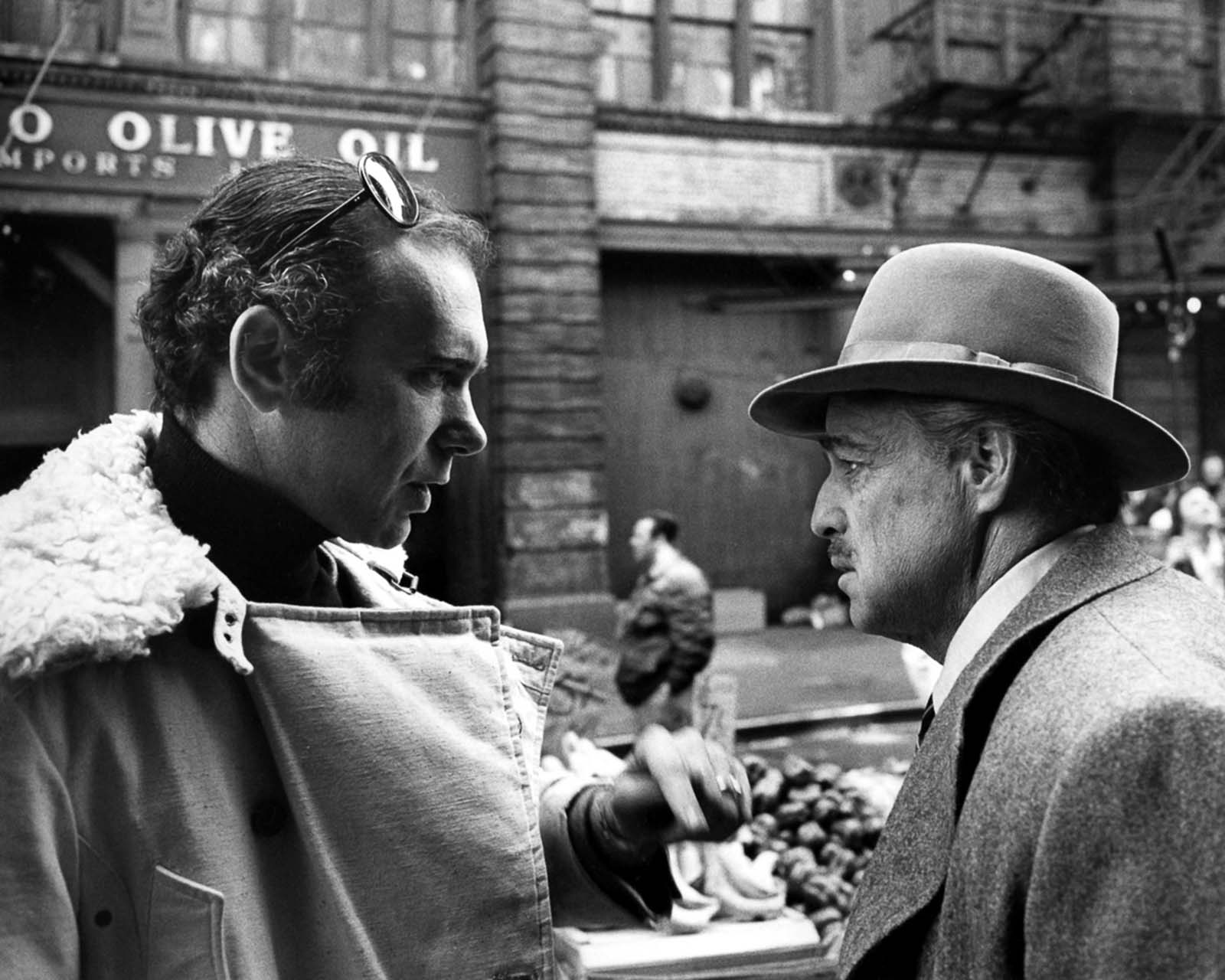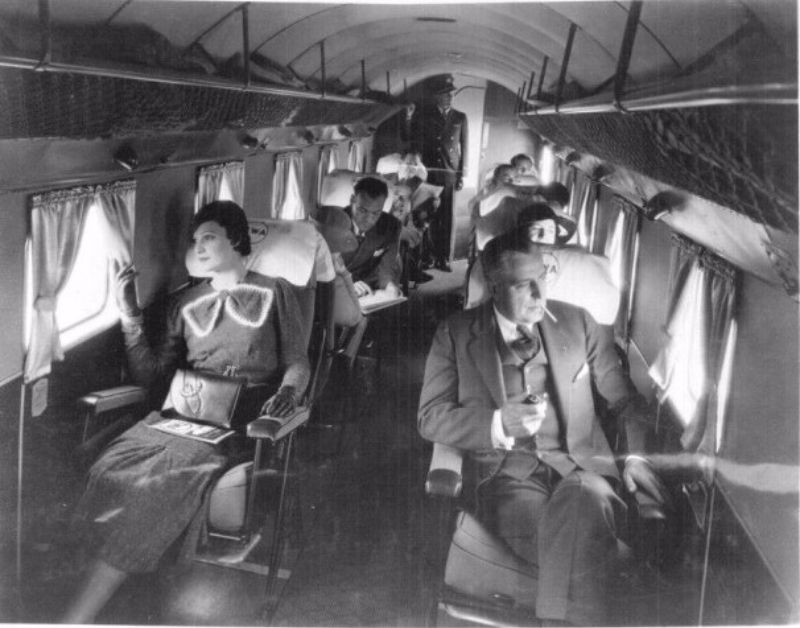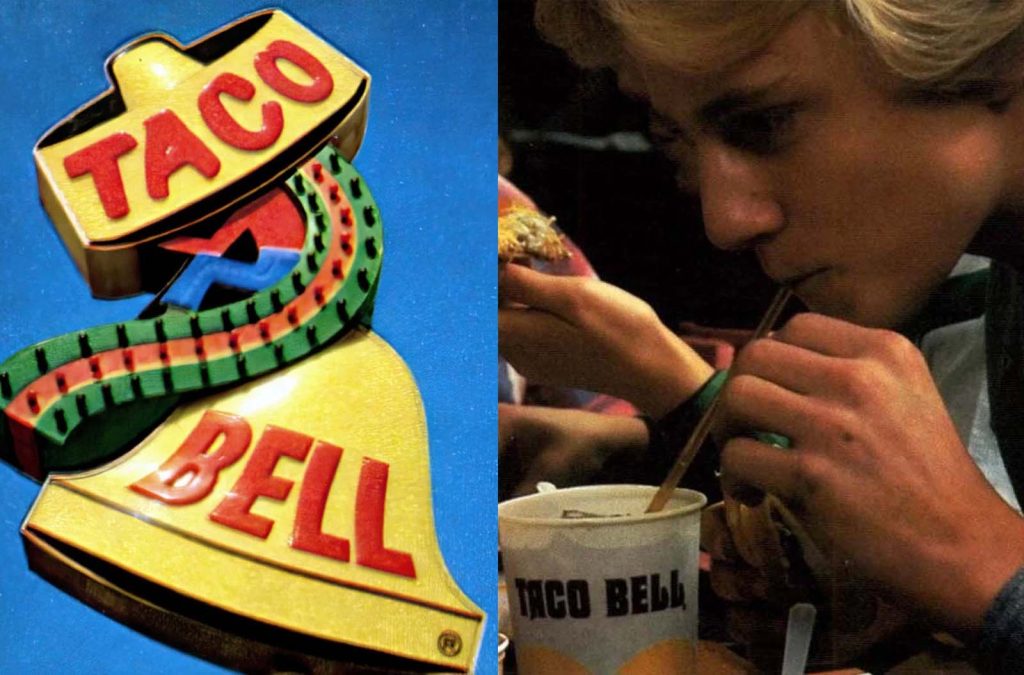
Nikola Tesla was a Serbian American inventor, electrical engineer, mechanical engineer, and futurist best known for his contributions to the design of the modern alternating current electricity supply system.
Training for an engineering career, he attended the Technical University at Graz, Austria, and the University of Prague.
At Graz he first saw the Gramme dynamo, which operated as a generator and, when reversed, became an electric motor, and he conceived a way to use alternating current to advantage.
Later, at Budapest, he visualized the principle of the rotating magnetic field and developed plans for an induction motor that would become his first step toward the successful utilization of alternating current.
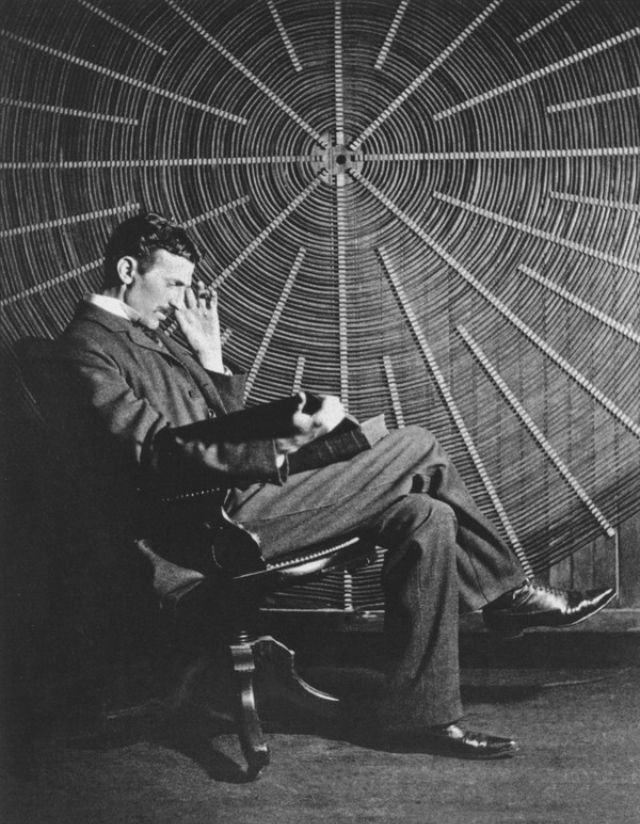
Nikola Tesla, with Roger Boskovich’s book, “Theoria Philosophiae Naturalis,” in front of the spiral coil of his high-frequency transformer at East Houston St. 46, New York.
In 1882 Tesla went to work in Paris for the Continental Edison Company, and, while on assignment to Strassburg in 1883, he constructed, after work hours, his first induction motor.
Tesla sailed for America in 1884, arriving in New York with four cents in his pocket, a few of his own poems, and calculations for a flying machine.
He first found employment with Thomas Edison, but the two inventors were far apart in background and methods, and their separation was inevitable.
In May 1888 George Westinghouse, head of the Westinghouse Electric Company in Pittsburgh, bought the patent rights to Tesla’s polyphase system of alternating-current dynamos, transformers, and motors.
The transaction precipitated a titanic power struggle between Edison’s direct-current systems and the Tesla-Westinghouse alternating-current approach, which eventually won out.
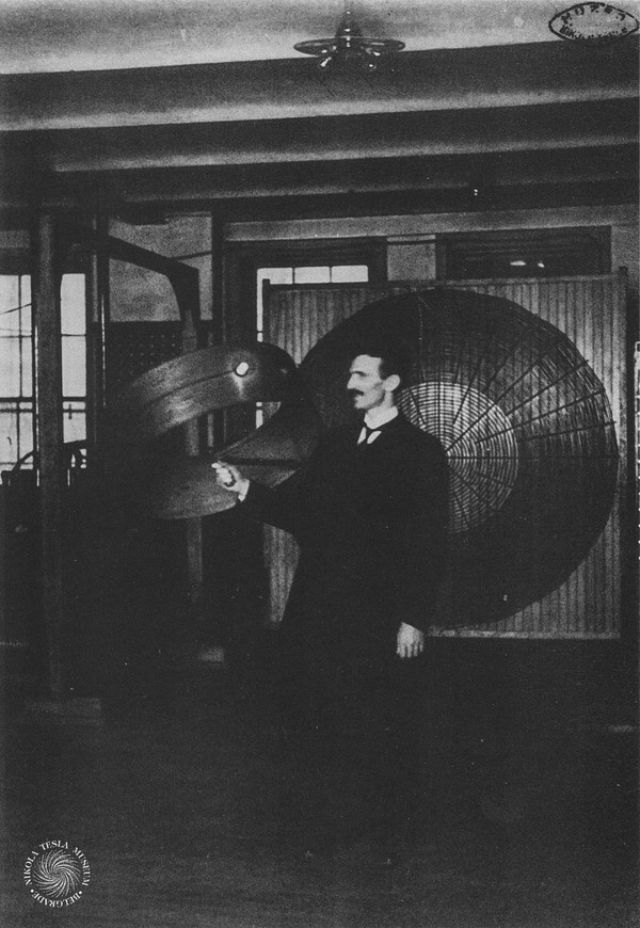
Tesla demonstrates “wireless” power transmission in his Houston Street laboratory in March 1899.
Tesla soon established his own laboratory, where his inventive mind could be given free rein. He experimented with shadowgraphs similar to those that later were to be used by Wilhelm Röntgen when he discovered X-rays in 1895.
Tesla’s countless experiments included work on a carbon button lamp, on the power of electrical resonance, and on various types of lighting.
In order to allay fears of alternating currents, Tesla gave exhibitions in his laboratory in which he lit lamps by allowing electricity to flow through his body. He was often invited to lecture at home and abroad.
The Tesla coil, which he invented in 1891, is widely used today in the radio and television sets and other electronic equipment. That year also marked the date of Tesla’s U.S. citizenship.
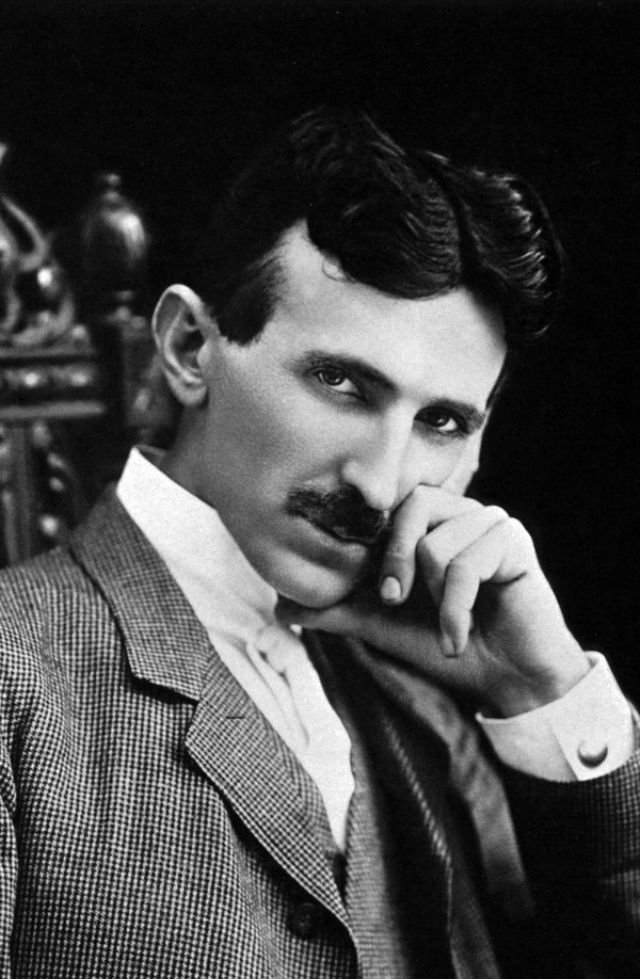
Nikola Tesla in his forties.
Westinghouse used Tesla’s alternating current system to light the World’s Columbian Exposition at Chicago in 1893. This success was a factor in their winning the contract to install the first power machinery at Niagara Falls, which bore Tesla’s name and patent numbers. The project carried power to Buffalo by 1896.
In 1898 Tesla announced his invention of a teleautomatic boat guided by remote control. When skepticism was voiced, Tesla proved his claims for it before a crowd in Madison Square Garden.
In Colorado Springs, Colorado, where he stayed from May 1899 until early 1900, Tesla made what he regarded as his most important discovery—terrestrial stationary waves.
By this discovery, he proved that Earth could be used as a conductor and made to resonate at a certain electrical frequency.
He also lit 200 lamps without wires from a distance of 40 km (25 miles) and created man-made lightning, producing flashes measuring 41 meters (135 feet).
At one time he was certain he had received signals from another planet in his Colorado laboratory, a claim that was met with derision in some scientific journals.
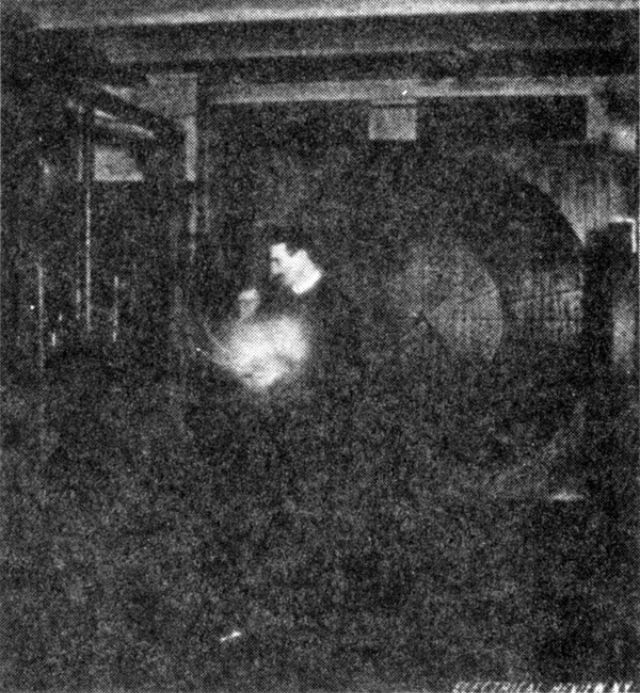
Photograph of the experimenter standing in the middle of the laboratory and lighting a vacuum bulb by waves from a distant oscillator — His body is, in this case, subjected to great electrical pressure.
Returning to New York in 1900, Tesla began construction on Long Island of a wireless world broadcasting tower, with $150,000 capital from the American financier J. Pierpont Morgan.
Tesla claimed he secured the loan by assigning 51 percent of his patent rights of telephony and telegraphy to Morgan.
He expected to provide worldwide communication and to furnish facilities for sending pictures, messages, weather warnings, and stock reports. The project was abandoned because of a financial panic, labor troubles, and Morgan’s withdrawal of support. It was Tesla’s greatest defeat.
Tesla’s work then shifted to turbines and other projects. Because of a lack of funds, his ideas remained in his notebooks, which are still examined by enthusiasts for unexploited clues.
In 1915 he was severely disappointed when a report that he and Edison were to share the Nobel Prize proved erroneous. Tesla was the recipient of the Edison Medal in 1917, the highest honor that the American Institute of Electrical Engineers could bestow.
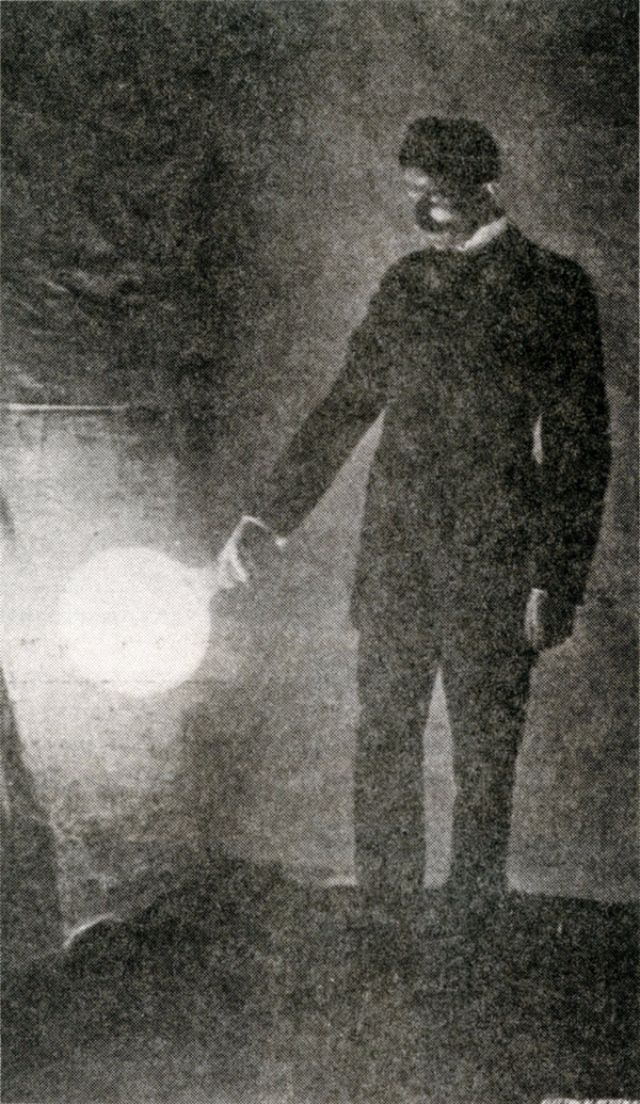
Lighting a disconnected vacuum bulb of 1,500 candle power by high-frequency currents — Photograph taken by the light of the bulb itself, exposure about two seconds.
Tesla allowed himself only a few close friends. Among them were the writers Robert Underwood Johnson, Mark Twain, and Francis Marion Crawford.
He was quite impractical in financial matters and an eccentric, driven by compulsions and a progressive germ phobia.
But he had a way of intuitively sensing hidden scientific secrets and employing his inventive talent to prove his hypotheses.
Tesla was a godsend to reporters who sought sensational copy but a problem to editors who were uncertain how seriously his futuristic prophecies should be regarded.
Caustic criticism greeted his speculations concerning communication with other planets, his assertions that he could split the Earth like an apple, and his claim of having invented a death ray capable of destroying 10,000 airplanes at a distance of 400 km (250 miles).
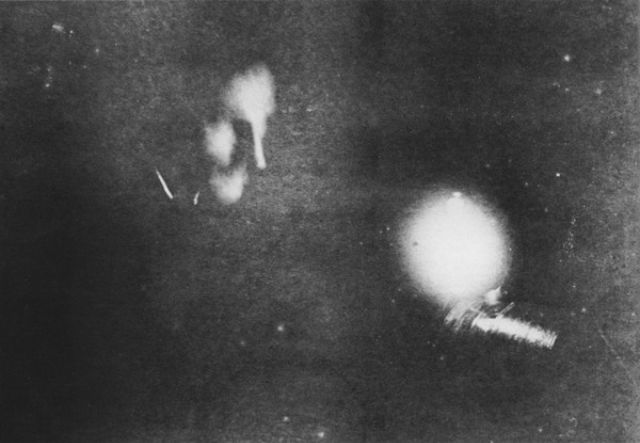
First photograph ever taken by phosphorescent light. The face is that of NikolaTesla, and the source of light is one of his phosphorescent bulbs. The time of exposure, eight minutes. Date of photograph January, 1894.
After Wardenclyffe, Tesla experimented with a series of inventions in the 1910s and 1920s with varying degrees of success. Having spent most of his money, Tesla lived in a series of New York hotels, leaving behind unpaid bills.
In the fall of 1937 at the age of 81, after midnight one night, Tesla left the Hotel New Yorker to make his regular commute to the cathedral and library to feed the pigeons.
While crossing a street a couple of blocks from the hotel, Tesla was unable to dodge a moving taxicab and was thrown to the ground.
His back was severely wrenched and three of his ribs were broken in the accident. The full extent of his injuries was never known; Tesla refused to consult a doctor, an almost lifelong custom, and never fully recovered.
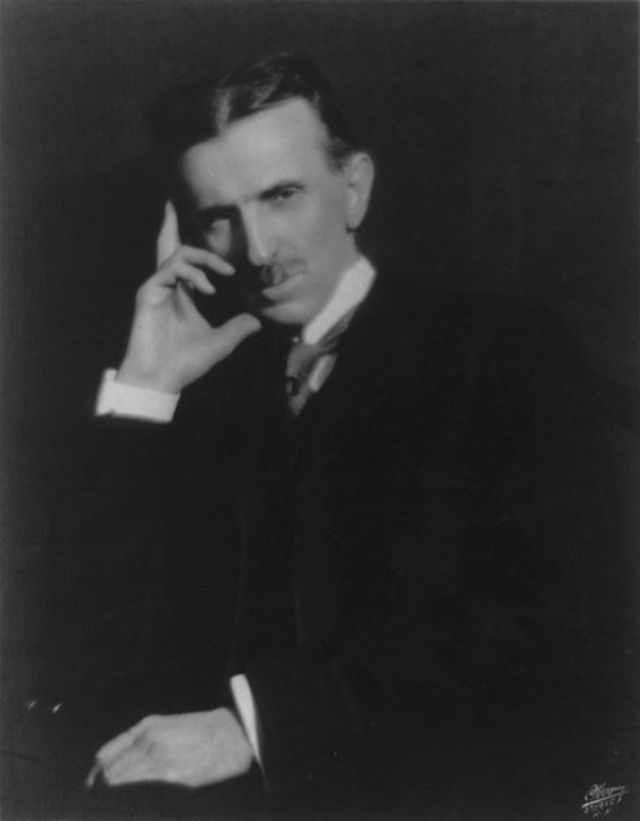
Dr. Nikola Tesla.
On 7 January 1943, at the age of 86, Tesla died alone in Room 3327 of the Hotel New Yorker. His body was found by maid Alice Monaghan when she entered Tesla’s room, ignoring the “do not disturb” sign that Tesla had placed on his door two days earlier.
Assistant medical examiner H.W. Wembley examined the body and ruled that the cause of death had been coronary thrombosis (a type of heart attack).
After Tesla’s death, the custodian of alien property impounded his trunks, which held his papers, his diplomas and other honors, his letters, and his laboratory notes.
These were eventually inherited by Tesla’s nephew, Sava Kosanovich, and later housed in the Nikola Tesla Museum in Belgrade.
Hundreds filed into New York City’s Cathedral of St. John the Divine for his funeral services, and a flood of messages acknowledged the loss of a great genius.
Three Nobel Prize recipients addressed their tribute to “one of the outstanding intellectuals of the world who paved the way for many of the technological developments of modern times.”

The hand of Nikola Tesla taken by using artificial daylight.

A glow of nitrogen fills the atmosphere. Tesla is photographed sitting in front of his generator. This photograph was taken in 1899.

Photograph showing an incandescent lamp lighted by means of waves transmitted through space to a coil without a condenser.
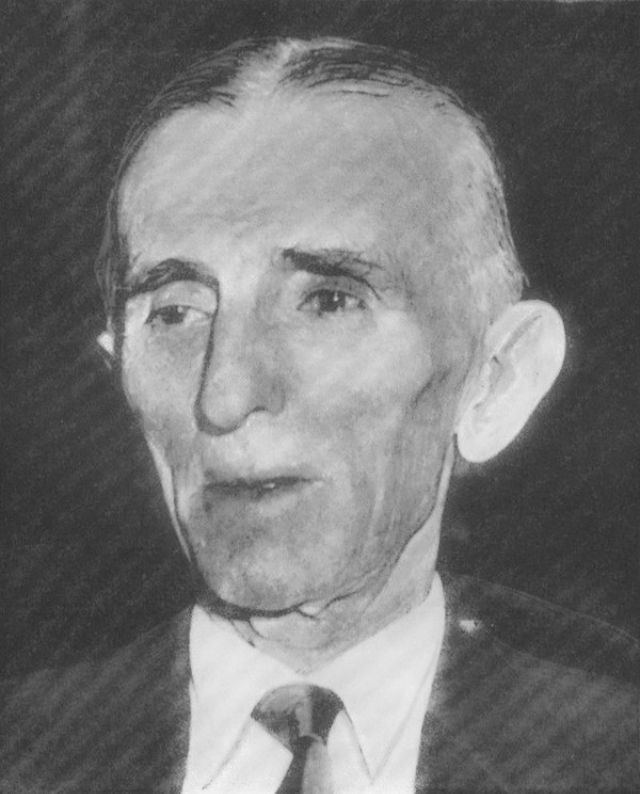
Publicity photo taken of Tesla by a reporter during his annual birthday press event.
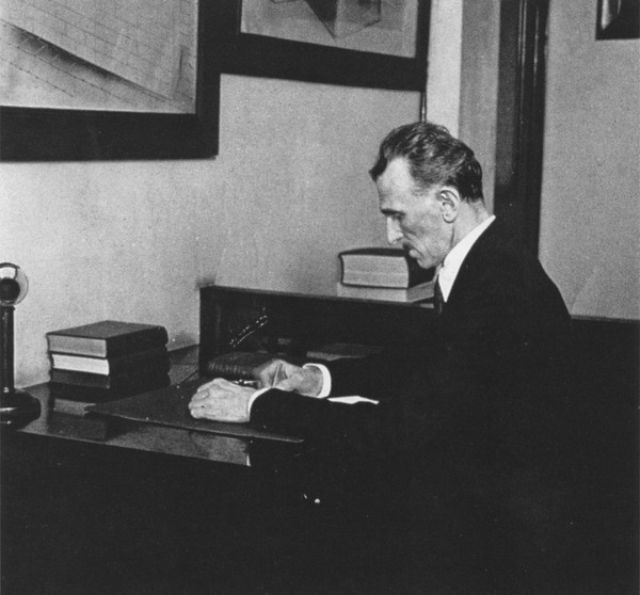
Tesla working in his office at 8 West 40th Street.
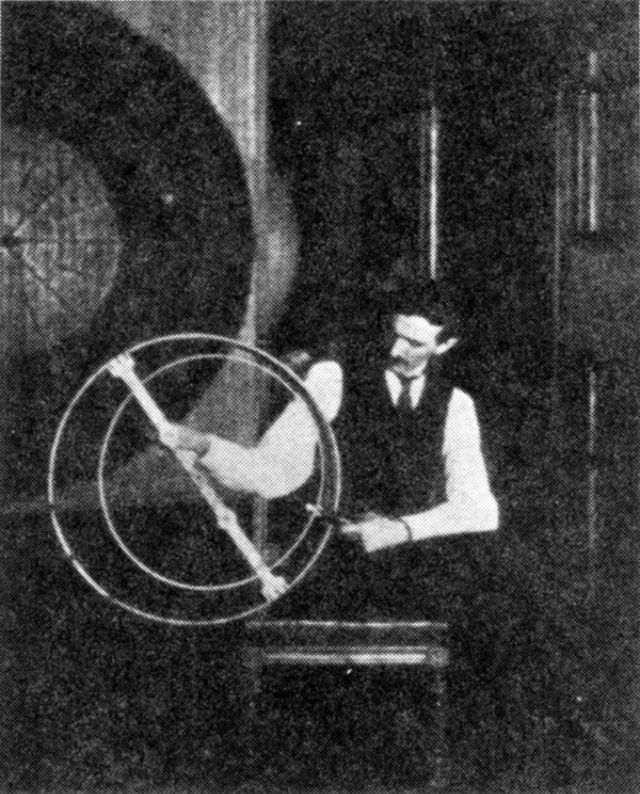
Experiment illustrating the action of a synchronized circuit energized by waves transmitted from a distant oscillator – The energy received is transferred upon another unresponsive circuit, lighting the incandescent lamp attached to the same.
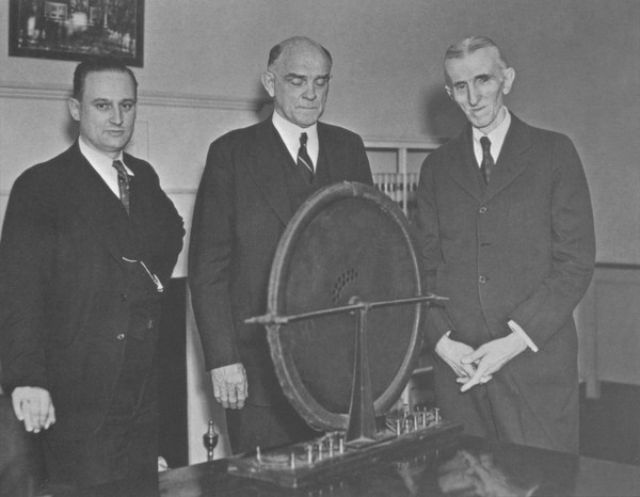
John T. Morris, Victor Beam and Tesla pose with the alternator that had been discovered.

Tesla holding a gas-filled phosphor coated wireless light bulb which he developed in the 1890’s, half a century before fluorescent lamps come into use. Published on the cover of the Electrical Experimenter in 1919.
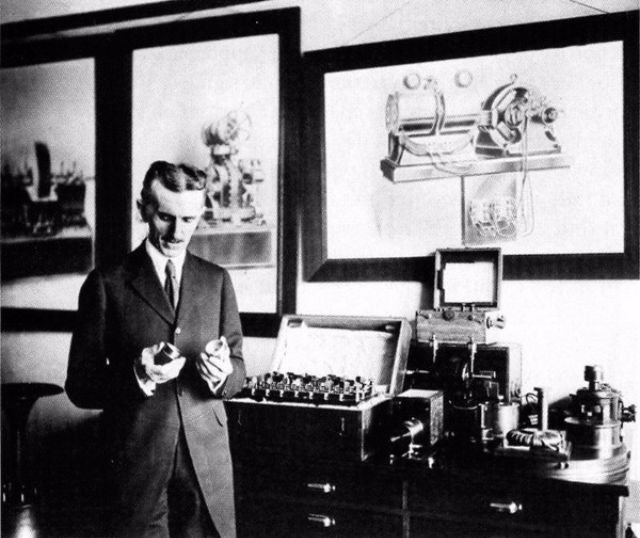
Tesla is seen in his New York City office in 1916. The inventor often crossed the street to Bryant Park to feed the pigeons there. The drawings behind Tesla depict his steam engine design.
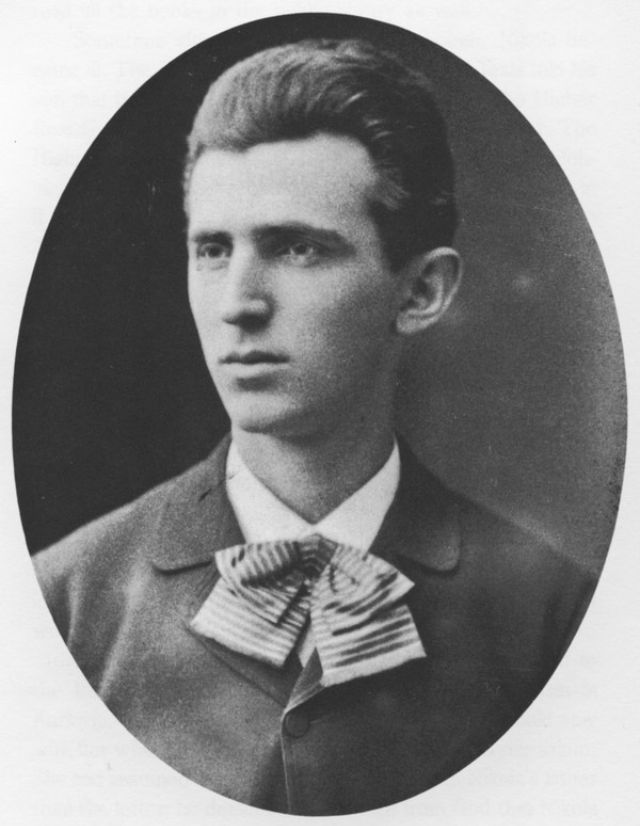
Tesla in 1879 at age twenty-three.
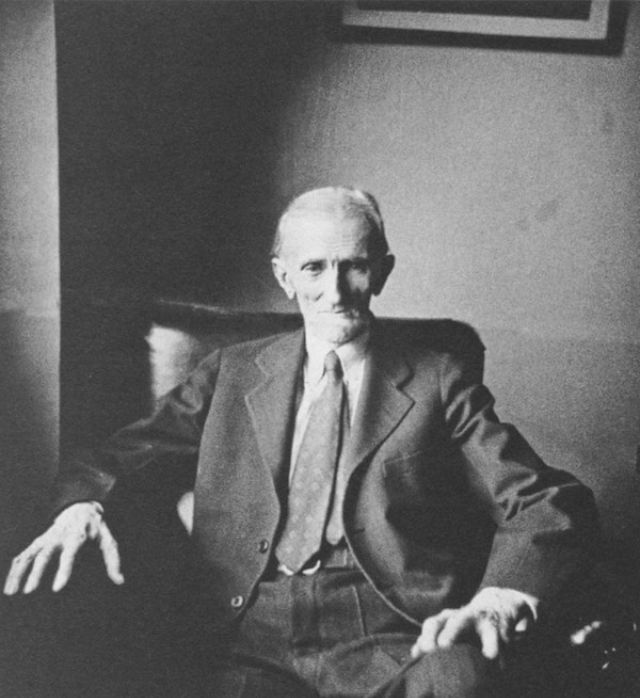
Tesla in his room at the Hotel New Yorker.

Tesla receives the Order of the White Lion from the Czechoslovak governments, July, 11, 1937.
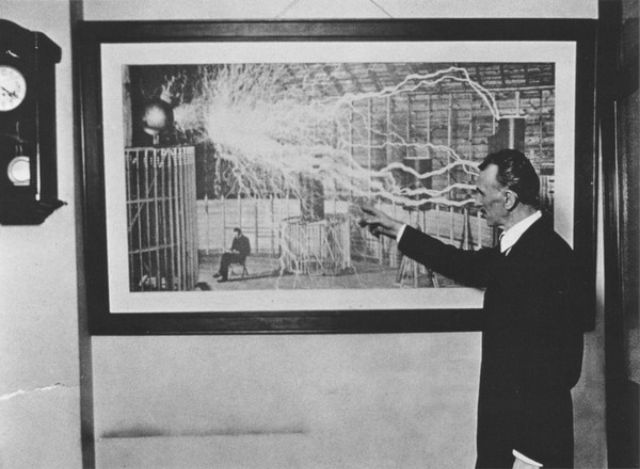
Tesla in 1916 pointing to a discharge in a photograph taken at Colorado Springs in 1899.

Nikola Tesla photographed working in his office at 8 West 40th Street. The image was taken in 1916.
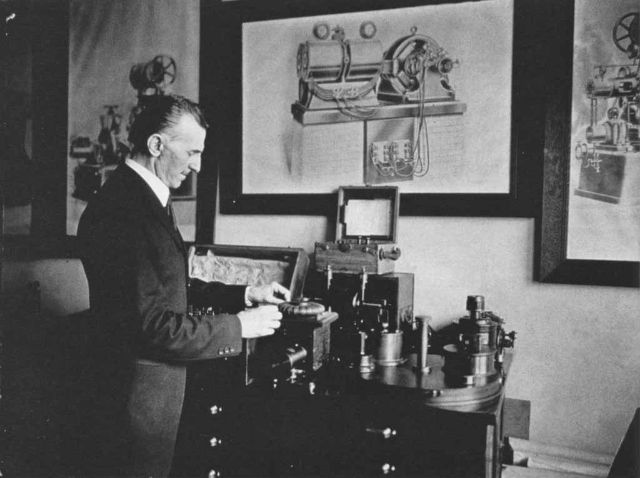
Pictured here is Nikola Tesla and one of his inventions. This image was taken in 1916.
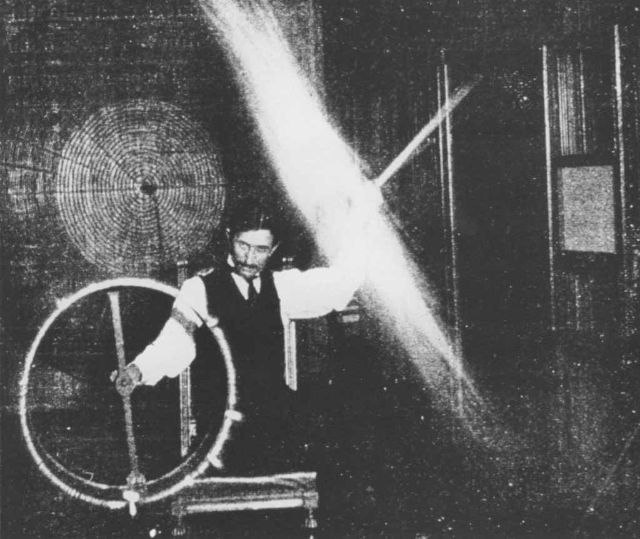
Tesla experiments with currents of High Voltage and High Frequency in 1899.
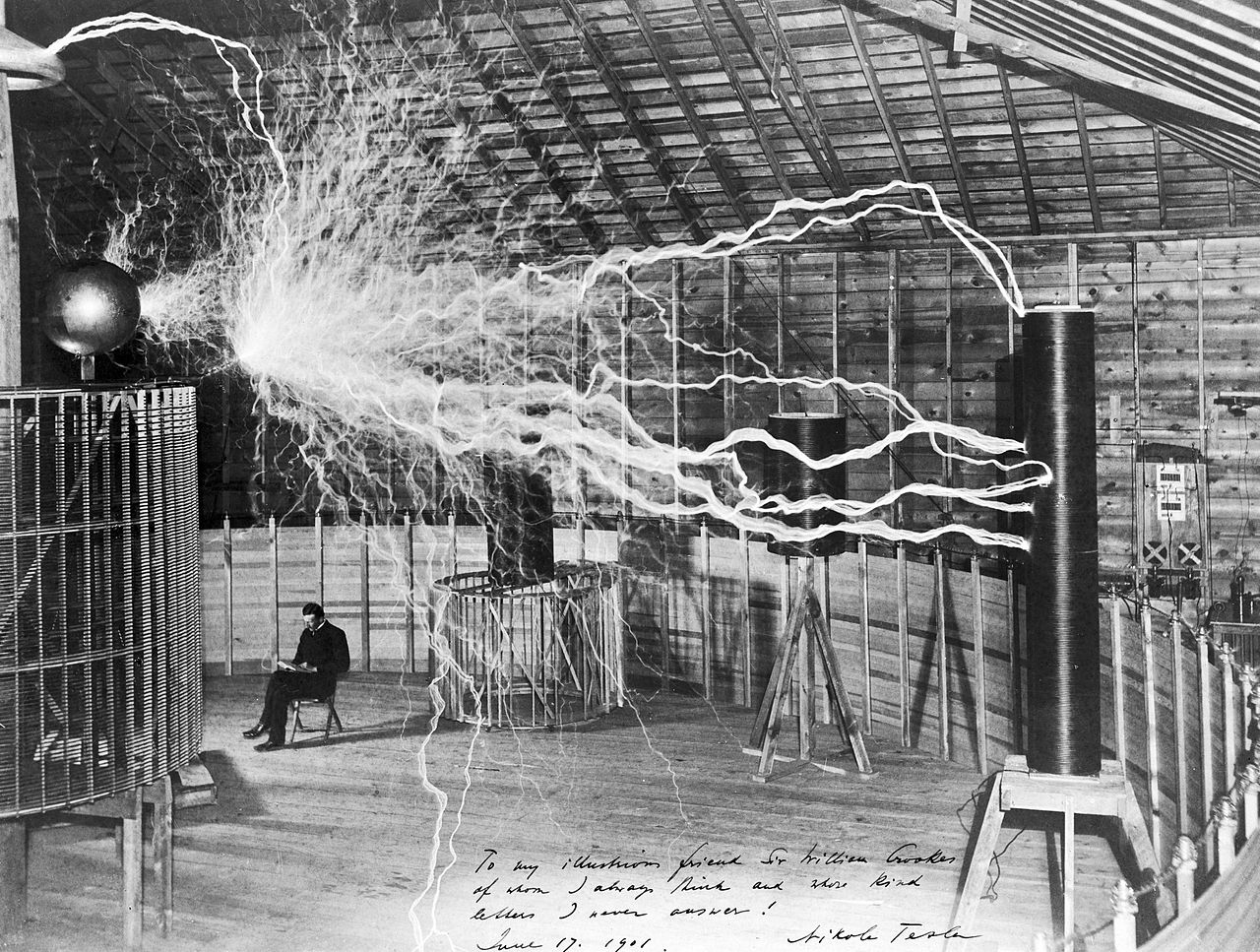
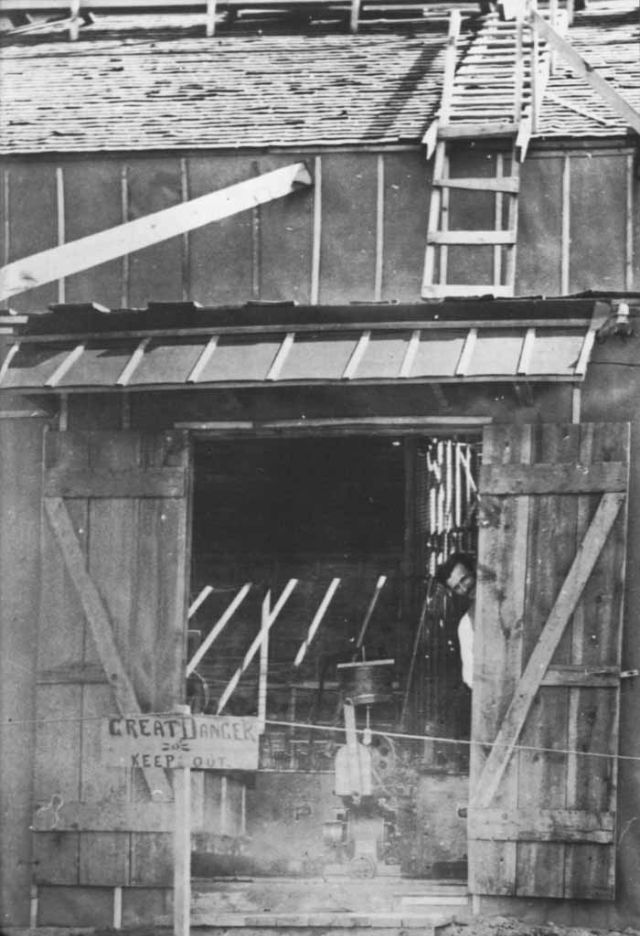
Tesla looks out the door of his laboratory in Colorado Springs. The image was taken in 1899.

Mark Twain (penname of Samuel Langhorne Clemens) in the lab of Nikola Tesla, spring of 1894. Clemens is holding Tesla’s experimental vacuum lamp, which is powered by a loop of wire which is receiving electromagnetic energy from a Tesla coil (not visible). Tesla’s face is visible in the background.

Nikola Tesla (blurred at center) performs an electrical experiment for writer Samuel Clemens (left), aka Mark Twain, and actor Joseph Jefferson in 1894.

Nikola Tesla standing next to his suite at the Hotel New Yorker, circa 1934.

Tesla’s Wardenclyffe Tower in Long Island, 1904.

The last known photo of Tesla. He died alone in a hotel room at the New Yorker on January 7, 1943. (More info about this picture).
(Photo credit: Pinterest / Flickr / Library of Congress / Google Arts and Photos / Text from Inez Whitaker Hunt of Britannica / Wikipedia / Wikimedia Commons / Tesla Universe).
